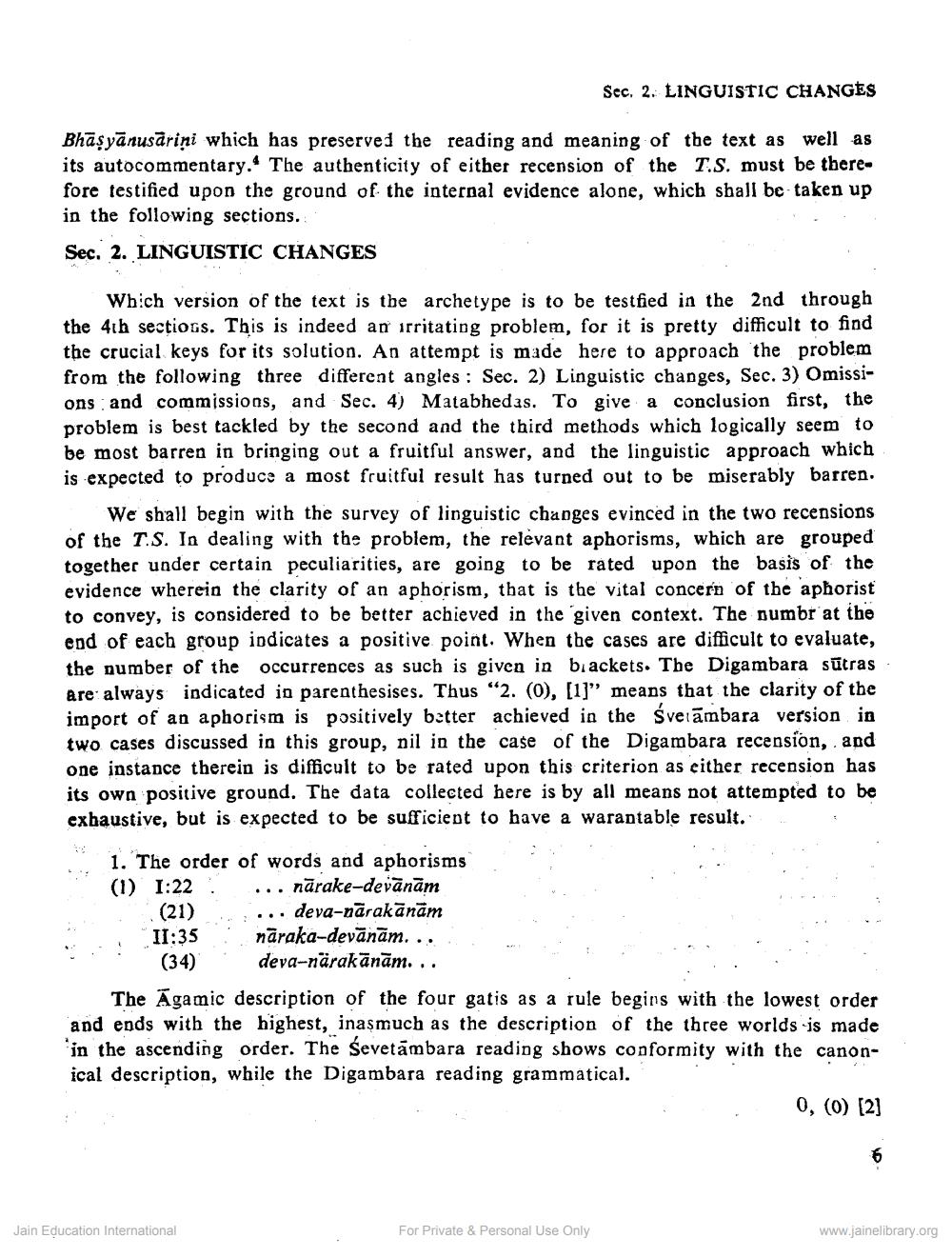________________
Sec. 2. LINGUISTIC CHANGES
Bhāsyānusarini which has preserved the reading and meaning of the text as well as its autocommentary. The authenticity of either recension of the T.S. must be therefore testified upon the ground of the internal evidence alone, which shall be taken up in the following sections. Sec. 2. LINGUISTIC CHANGES
Which version of the text is the archetype is to be testfied in the 2nd through the 4th sectioss. This is indeed an irritating problem, for it is pretty difficult to find the crucial keys for its solution. An attempt is made here to approach the problem from the following three different angles : Sec. 2) Linguistic changes, Sec. 3) Omissions and commissions, and Sec. 4) Matabhedas. To give a conclusion first, the problem is best tackled by the second and the third methods which logically seem to be most barren in bringing out a fruitful answer, and the linguistic approach which is expected to produce a most fruitful result has turned out to be miserably barren.
We shall begin with the survey of linguistic changes evinced in the two recensions of the T.S. In dealing with the problem, the relevant aphorisms, which are grouped together under certain peculiarities, are going to be rated upon the basis of the evidence wherein the clarity of an aphorism, that is the vital concern of the apħorist to convey, is considered to be better achieved in the given context. The numbr at the end of each group indicates a positive point. When the cases are difficult to evaluate, the number of the occurrences as such is given in brackets. The Digambara sūtras are always indicated in parenthesises. Thus "2. (O), [1]" means that the clarity of the import of an aphorism is positively better achieved in the verāmbara version in two cases discussed in this group, nil in the case of the Digambara recension, and one instance therein is difficult to be rated upon this criterion as either recension has its own positive ground. The data collected here is by all means not attempted to be exhaustive, but is expected to be sufficient to have a warantable result.
der
1. The order of words and aphorisms (1) 1:22: ... nārake-devānām
(21) ... deva-nārakānām II:35 näraka-devānām....
(34) deva-närakānām. .. The Āgamic description of the four gatis as a rule begins with the lowest order and ends with the highest, inasmuch as the description of the three worlds is made in the ascending order. The Sevetāmbara reading shows conformity with the canonical description, while the Digambara reading grammatical.
0,(0) [2]
Jain Education International
For Private & Personal Use Only
www.jainelibrary.org




